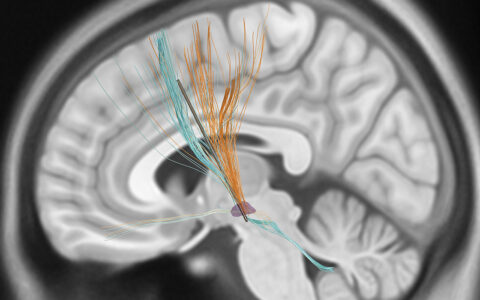Sarcopenia, or loss of skeletal muscle mass and function, has long been recognized as an important geriatric condition and a key precursor to frailty and late-life disability. It affects between 30 to 50 percent of hospitalized patients aged 60 years or older. Additionally, there has been an increase in sarcopenia in younger patients with obesity and/or type 2 diabetes mellitus, where infiltration of fat deposits in muscle promotes inflammation and insulin resistance.
“The changes in body composition that we used to think were associated with aging we’re now seeing much earlier, especially in obesity where there is dysfunctional adipose tissue,” said Heidi Silver, Ph.D., research associate professor and director of the Diet, Body Composition, and Human Metabolism Core at Vanderbilt University Medical Center.
Scope of the Problem
According to Silver, sarcopenic obesity is prevalent in many patients admitted to nursing homes today because so many are overweight or obese, sedentary and inadequately nourished. “The problem is that many of them look over-nourished,” she said, “so they don’t get diagnosed with this insidious form of malnutrition.”
Silver and colleagues recently studied 250 patients residing in Tennessee nursing homes. “Forty-two percent of those in the study had sarcopenic obesity; in contrast, only seven percent had a more typical form of age-related malnutrition. This is not what we’re used to seeing in long-term care,” she said.
A rise in sarcopenic obesity in younger patients is contributing to the scale of the problem. “The level of sarcopenic obesity we are seeing in young patients is particularly serious,” Silver said, “because the long-term outcomes are not only the same ones we associate with getting older – falls, fractures, physical disability and frailty – but also insulin resistance, metabolic syndrome and type 2 diabetes. Sarcopenic obesity is also associated with adverse postoperative outcomes such as surgical site infection, wound breakdown and ICU admissions.”
Identifying and Predicting Sarcopenia
A primary goal of Silver’s research is to develop diagnostic tools to help identify or predict sarcopenia earlier. She is employing CT scans used for diagnostic purposes in other disease states and reanalyzing the images for body composition.
“With a CT scan image,” Silver said, “we can quantify the amount and density of muscle and the types of fat present in a specific anatomical location, to see how these measurements associate with clinical outcomes and risk factors. We’re seeing four to five times normal fat. It’s important to recognize that adipose tissue is not inert; it secretes cytokines and other active substances into the muscle, creating inflammation and insulin resistance.”
“With a CT scan, we can quantify the muscle and the types of fat present to see how they associate with clinical outcomes and risk factors.”
Silver is also testing specially designed software to identify electronic health record factors that can be used as a proxy for CT scan analyses. “The trouble with sarcopenia,” she said, “is that there is no one unique biomarker; no one lab value you can evaluate or follow.”
Educating Providers
As few as five percent of patients with malnutrition or at risk of developing sarcopenic obesity have a documented diagnosis, Silver said. In 2018, Silver and colleagues published the results of a six-month prospective pilot testing the effectiveness of the MQii toolkit, or Malnutrition Quality Improvement Initiative. The work was a multi-year effort to highlight gaps in existing malnutrition care and the impact of using the toolkit to reduce these gaps.
The pilot included 45 health care professionals from geriatrics, general medicine and general surgery at Vanderbilt. A three-month intervention with training and education modules tailored to practitioner type was integrated into existing teaching and clinical workflow. Results of the pilot training were promising and included a 14 percent increase in malnutrition knowledge.
“We have to create awareness of the many types of malnutrition among clinical providers,” Silver said. “They need to be able to identify this earlier and get on board with evidence-based interventions.”





